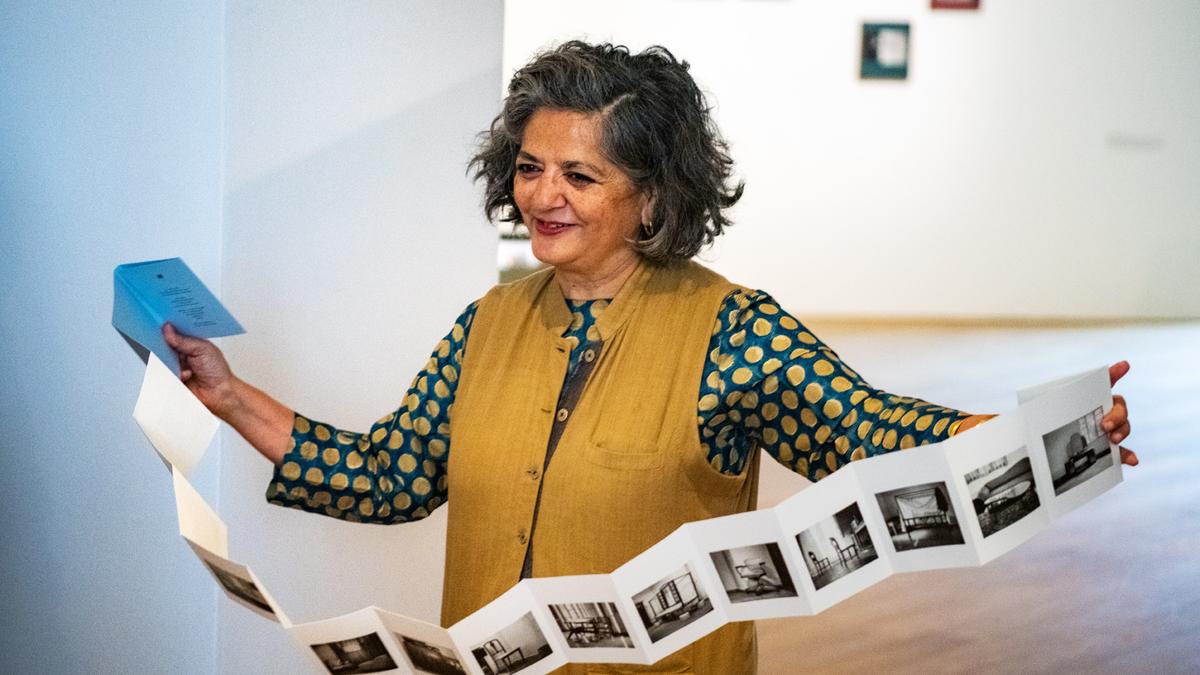
Why photobooks are making the cut
The Hindu
Discover the world of photobooks, a unique art form that tells stories through images, design, and print in books.
For the past few months, my social media timeline has been awash with photobooks. There was the release of Anurag Banerjee’s The Songs of Our People, Aparna Nori’s How to Climb a Tree, Ritesh Uttamchandani’s Where are you, and Bharat Sikka’s Souvenir Shop. Srinivas Kuruganti’s Pictures in my Hand of a Boy I still Resemble released andwas shortlisted in early September for the Aperture Photobook Awards, the world’s biggest photobook awards. The last 50 copies of Kushal Ray’s 2012 Intimacies were promoted online, and sold out in days. The eighth edition of Alkazi Photobook Grant took place; it followed Photo South Asia’s first photobook workshop in April with Tanvi Mishra, who works with images, and publisher Cecile Poimboeuf-Koizumi.
This is usually the point where I lose my audience. What’s this excitement about photobooks? Haven’t photography books been around for yonks? Don’t we already know them as coffee table books and monographs? The short answer: no. Those are not photobooks. A photobook is an artwork. They tell stories in the sense that artworks tell stories — they affect you the way paintings, sculptures, or installations do. While its medium is images, paper, design, and print, and it takes the form of a book, it’s analogous to the way some artists use film or video, which includes images, editing, and music.
Coffee table books are usually thematic, such as Prabuddha Dasgupta’s Ladakh: The Pristine Beauty, or they are compendiums, like The Archival Gaze: A Timeline of Photography in India, 1840-2020. “A photobook uses images, or a visual language, as its vehicle for storytelling. Much like you can read words in a chronology on a page, you can also read images in chronology, and in relation to each other,” says Kaamna Patel, 36, artist, publisher, and founder of Editions Jojo, a Mumbai-based publishing imprint, bookshop, and library.
Storytelling is the key word here. “Photography has the potential to take you where there is no vocabulary. Therefore, when you have an entire book, you basically have a diary or a novel or a story,” says artist Dayanita Singh, who has published 14 photobooks at last count and whose experiments with the form have expanded the very idea of what it can be — from being unbound, accordion fold books to becoming a book object and an exhibition in itself, making her one of its most important exponents. “A really good photobook allows you to create your own story out of it.”
The first photobook I ever saw was in 2010. It was Singh’s Dream Villa, a tall, slim, hardbound book, its pages full of photographs of nightscapes, and trees washed in reds, blues, and greens. I was puzzled as I flipped through it. It wasn’t the large size of a coffee table or photography book, it wasn’t a ‘best of’, there was no ‘theme’. Instead, the series of photographs seemed to lead to some unknown destination. I put it away.
As with art, the more you see the more you understand. In 2020, the Indian Photo Festival in Hyderabad went online and one of their offerings was a Reading Room by Editions Jojo. It offered a virtual flip-through of 10 photobooks (it’s still online). I finally understood that as art tells varied stories in different genres, so too do photobooks.
For example, over the past few years in India, there has been gothic romance (I’ll be Looking at the Moon but I’ll be Seeing You), docu-fiction about a nomadic troupe of Dalit ‘families’ (Tamasha), an exploration of belonging via the lives of musicians in Meghalaya (The Songs of Our People), and even a dive into love, companionship, and mental health (Crazy Cat & Lady).

Thomas Jefferson and Abraham Lincoln are two of the greatest presidents that the U.S. has seen. You probably know that already. But did you know that Jefferson made what is considered the first contribution to American vertebrate paleontology? Or that Lincoln is the only U.S. president to receive a patent? What’s more, both their contributions have March 10 in common… 52 years apart. A.S.Ganesh hands you the details…












